Abstract
1. Using ventricle strips of the frog's heart stimulated at the low rate of about 1 shock/min intracellular action potentials were recorded under conditions of varying calcium concentrations.
2. Overshoots of action potentials were increased by about 18·3 mV as a result of a 10-fold increase, within the range of 0·1-5 mM, of the calcium concentration.
3. A similar effect was obtained by strontium, but magnesium was ineffective.
4. The increase of the overshoot by high calcium was associated with an increased rate of rise of the potential during the later part of its ascending phase. The initial fast upstroke remained unaltered.
5. Another effect, a depression of the overshoot, developed during periods of repetitive stimulation, at the rate of 20/min, and this was followed by a gradual recovery during subsequent periods of rest.
6. The depression of the overshoot increased with increasing calcium concentrations reaching values of over 40 mV.
7. High concentrations of strontium and low concentrations of sodium also induced depression of the overshoot, but high magnesium was ineffective.
8. A tentative hypothesis has been proposed attributing these two effects: (a) to an entry of calcium through the excitable membrane thus contributing to the ionic inward current, and (b) to a resulting accumulation of calcium in some cellular store.
Full text
PDF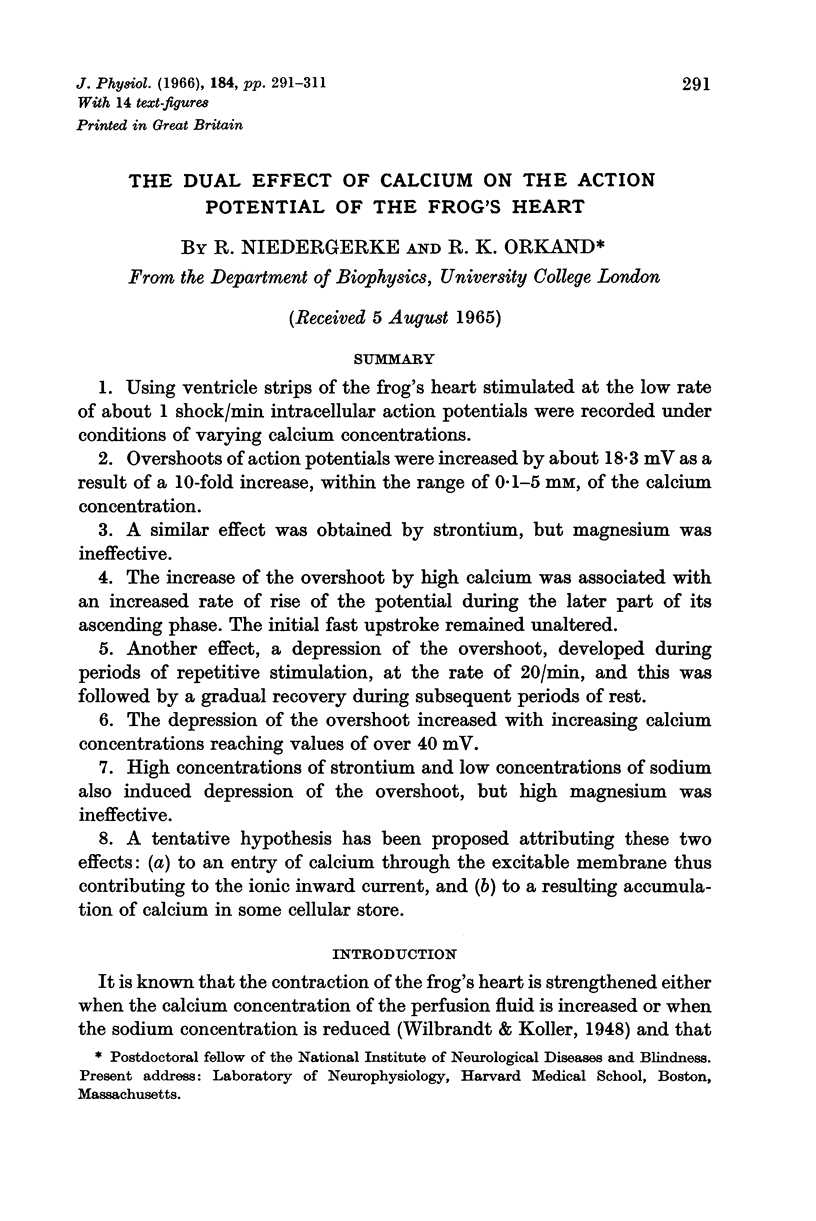
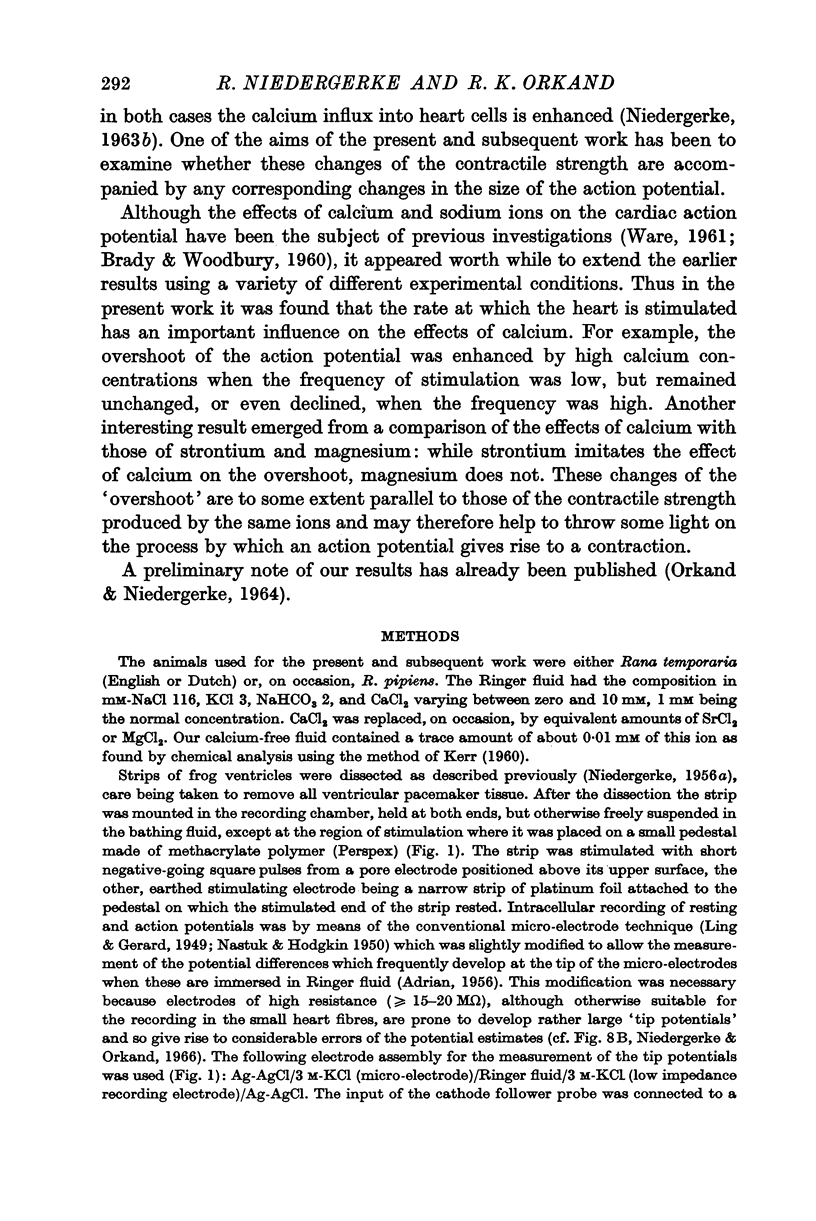
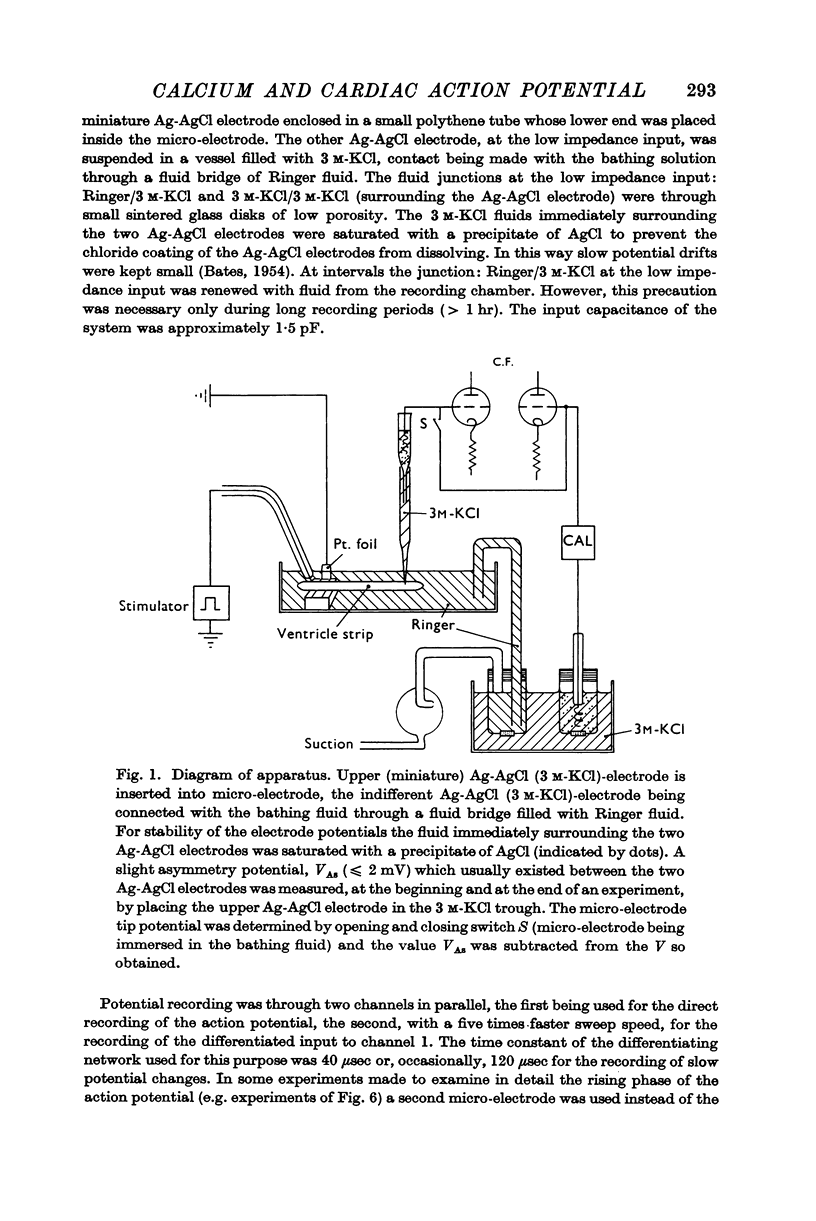
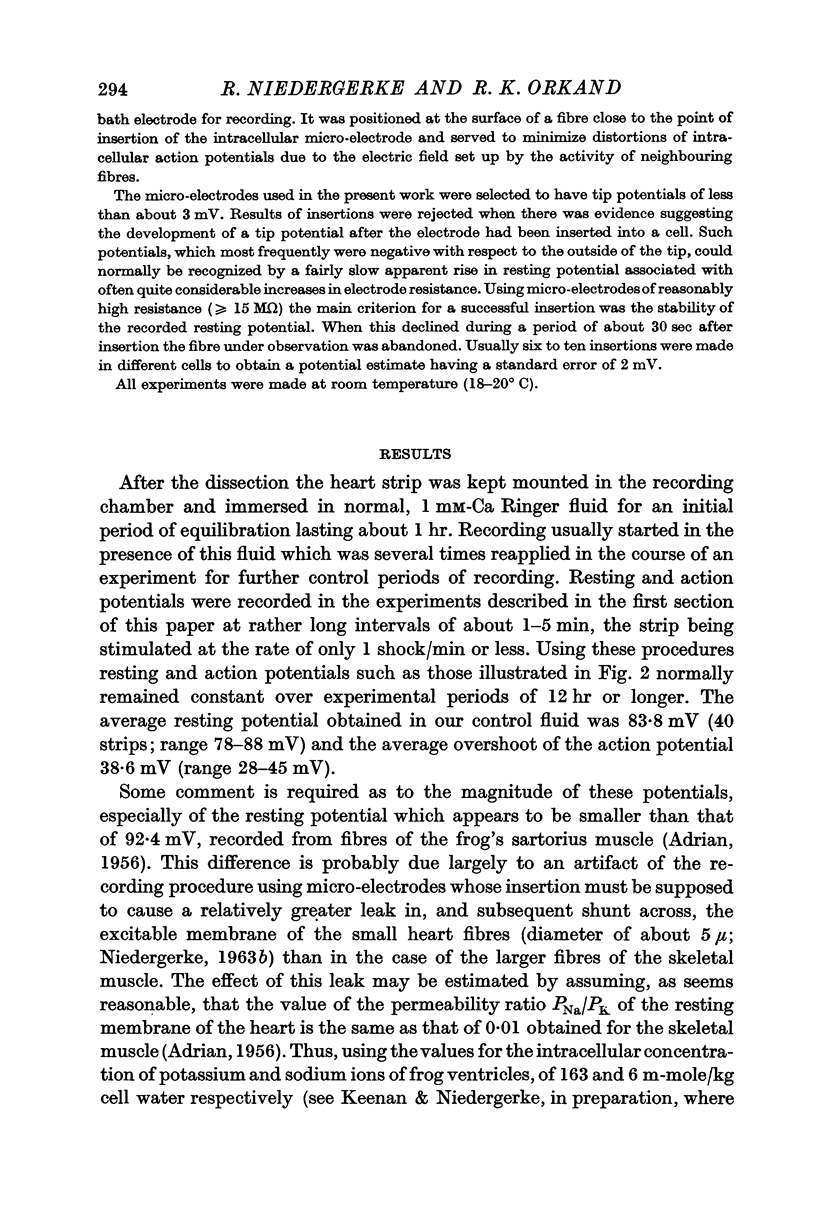
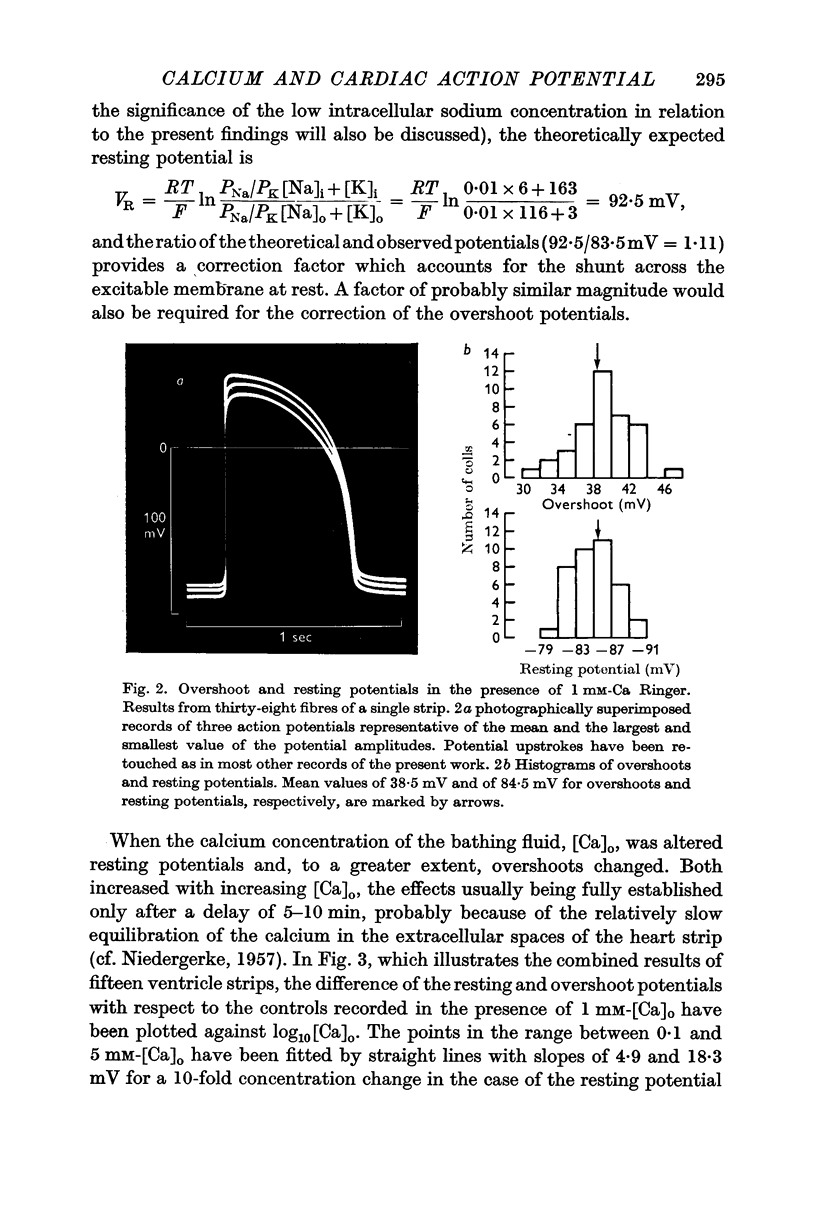
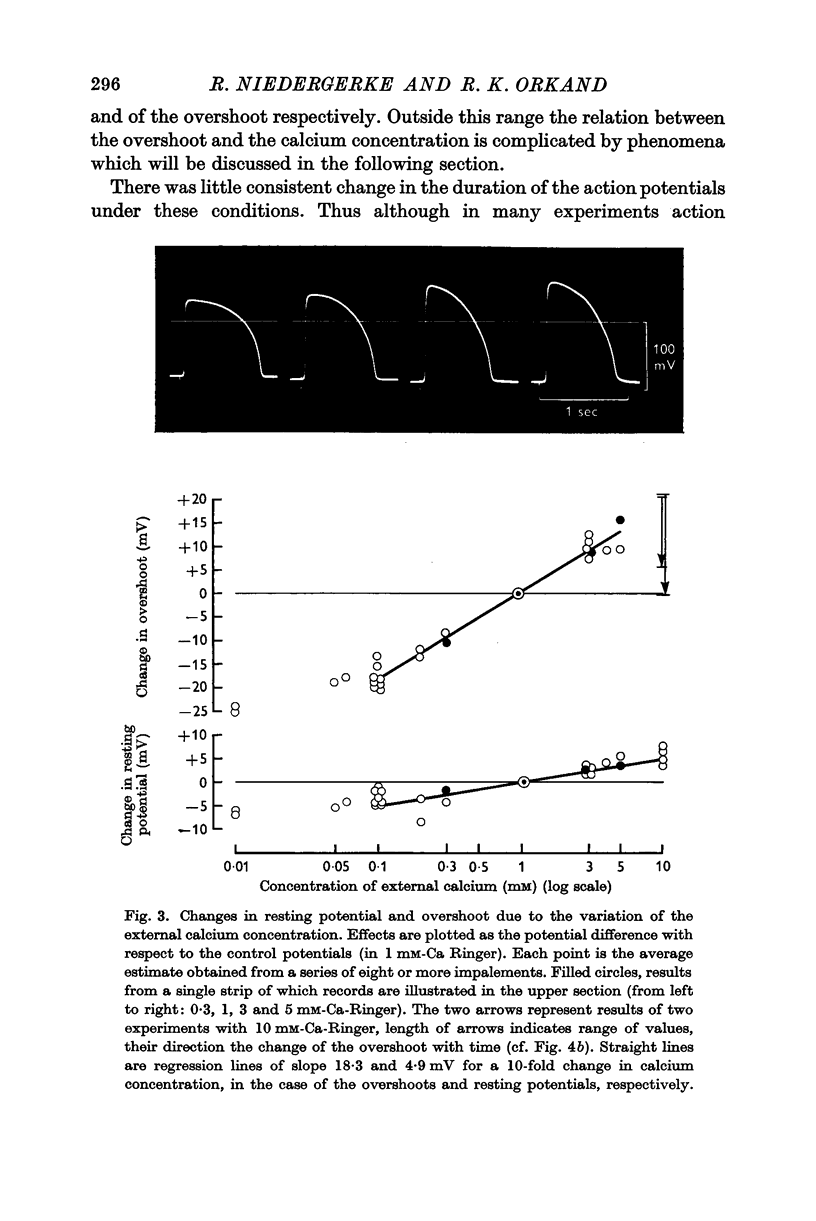
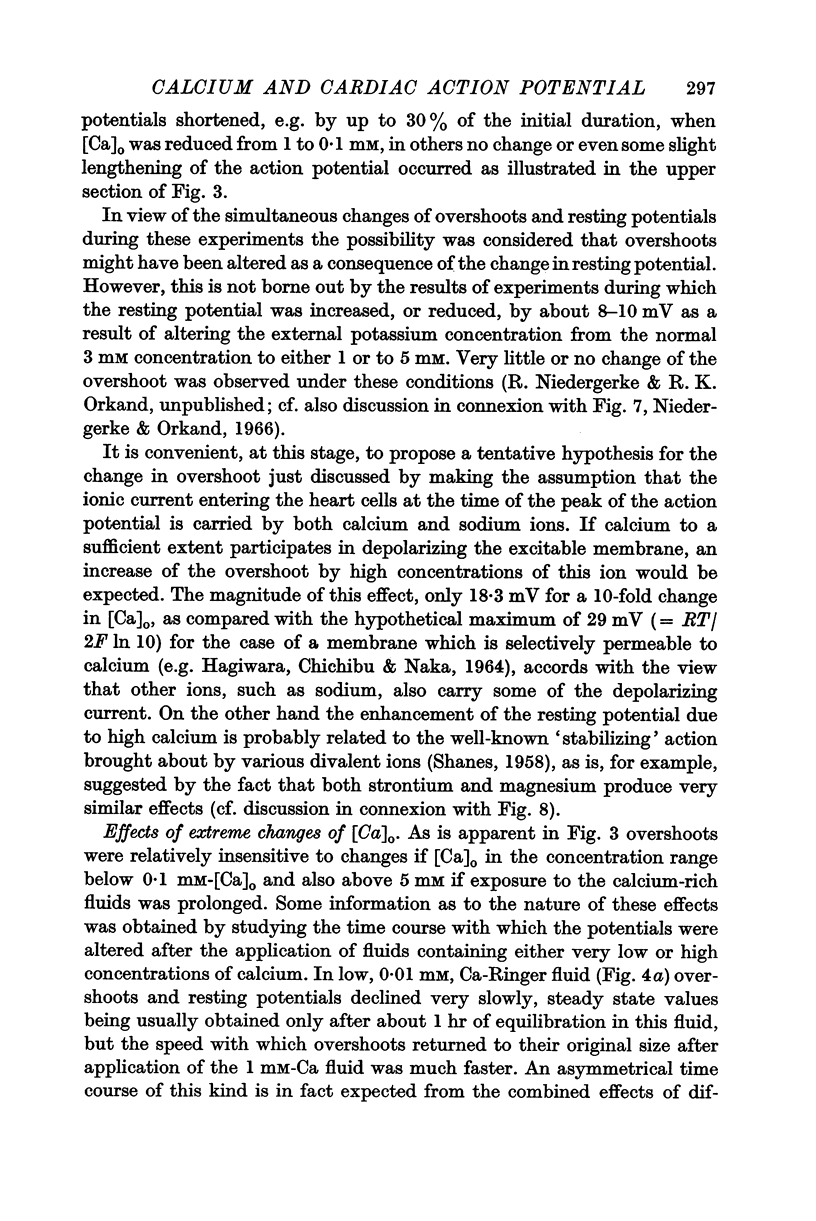
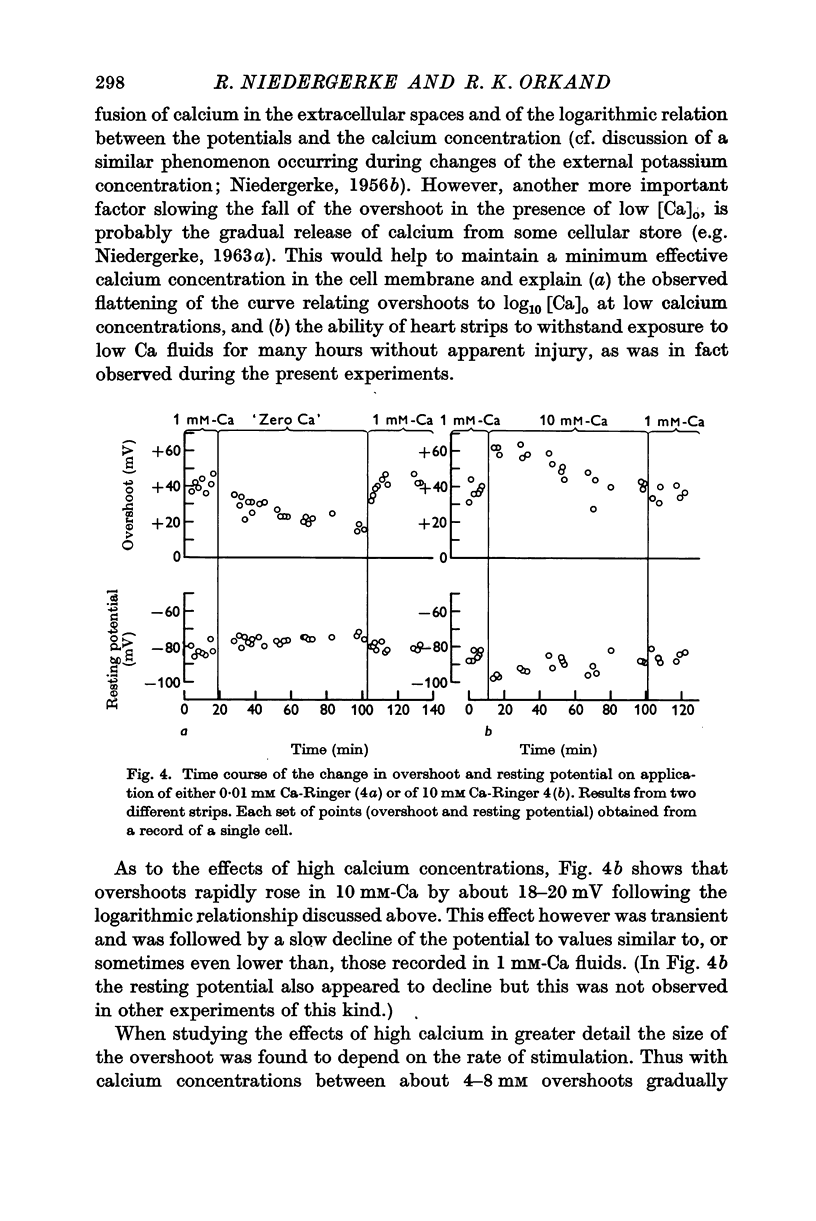
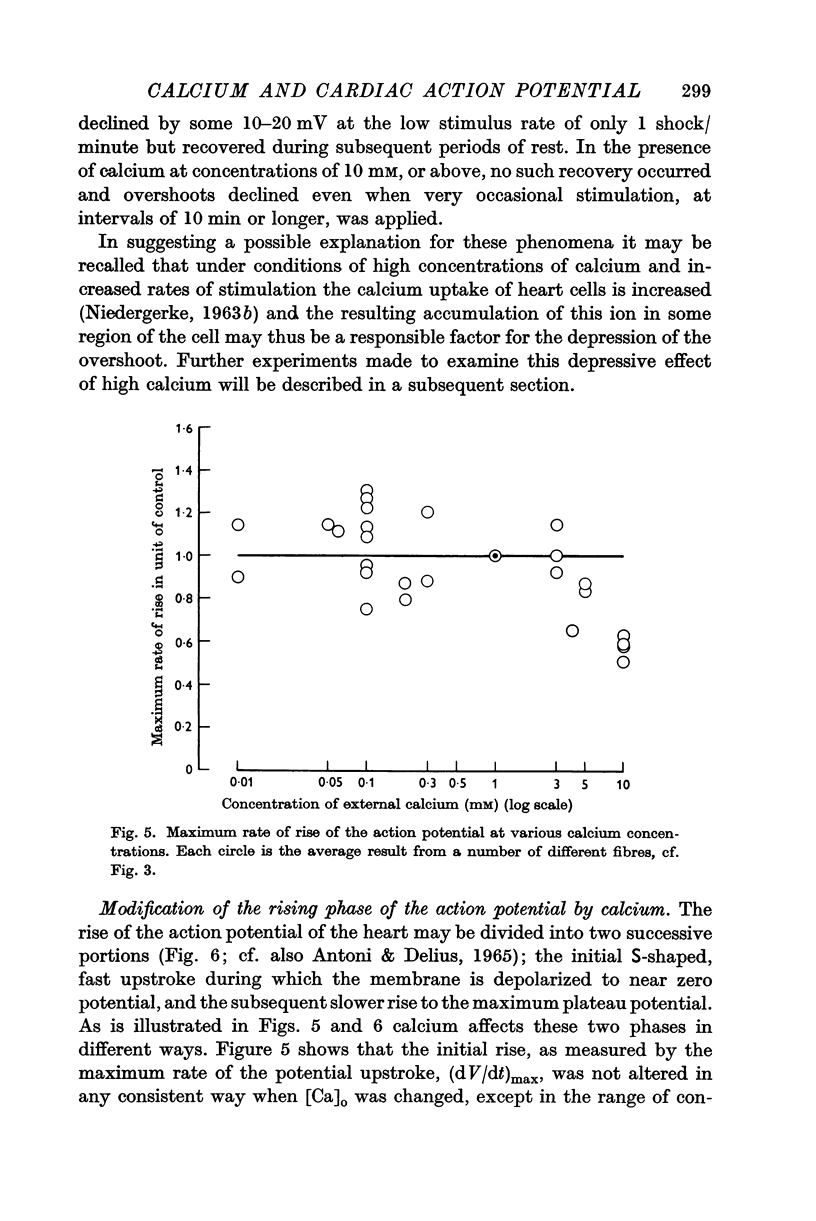
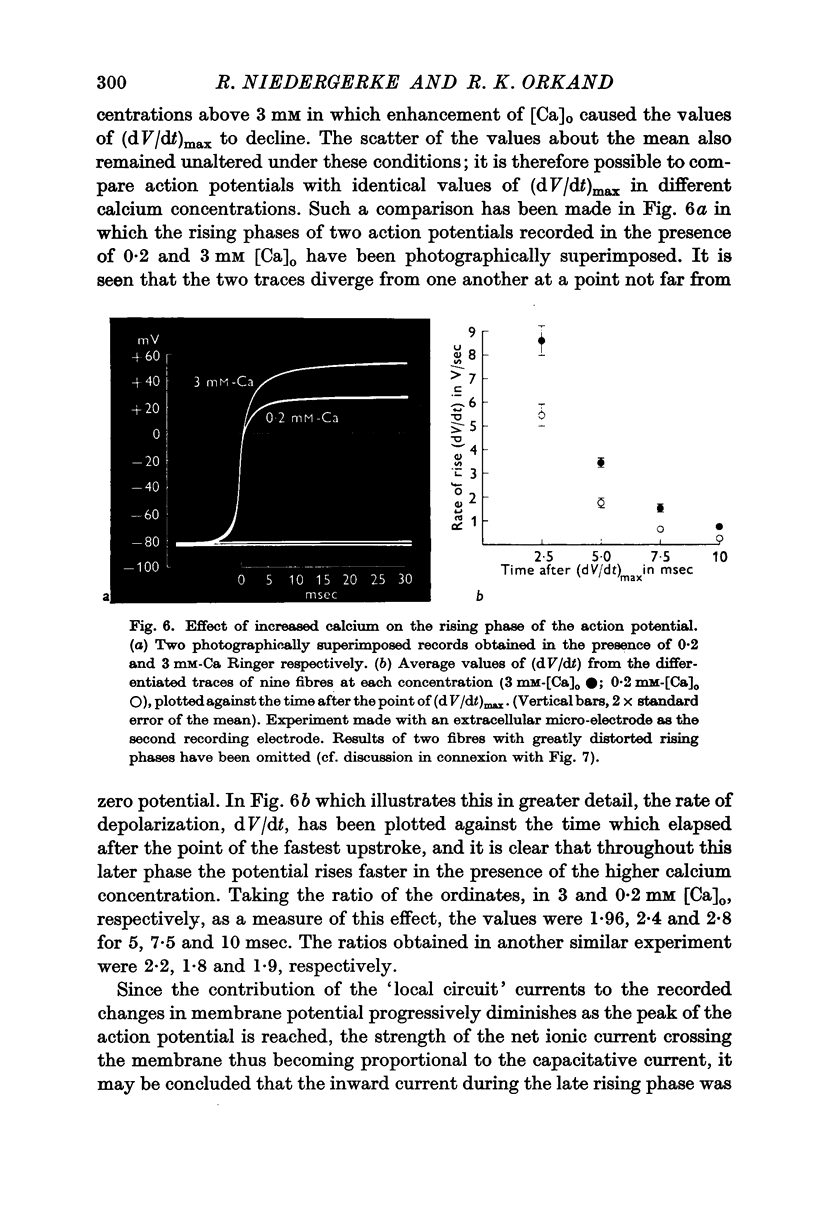
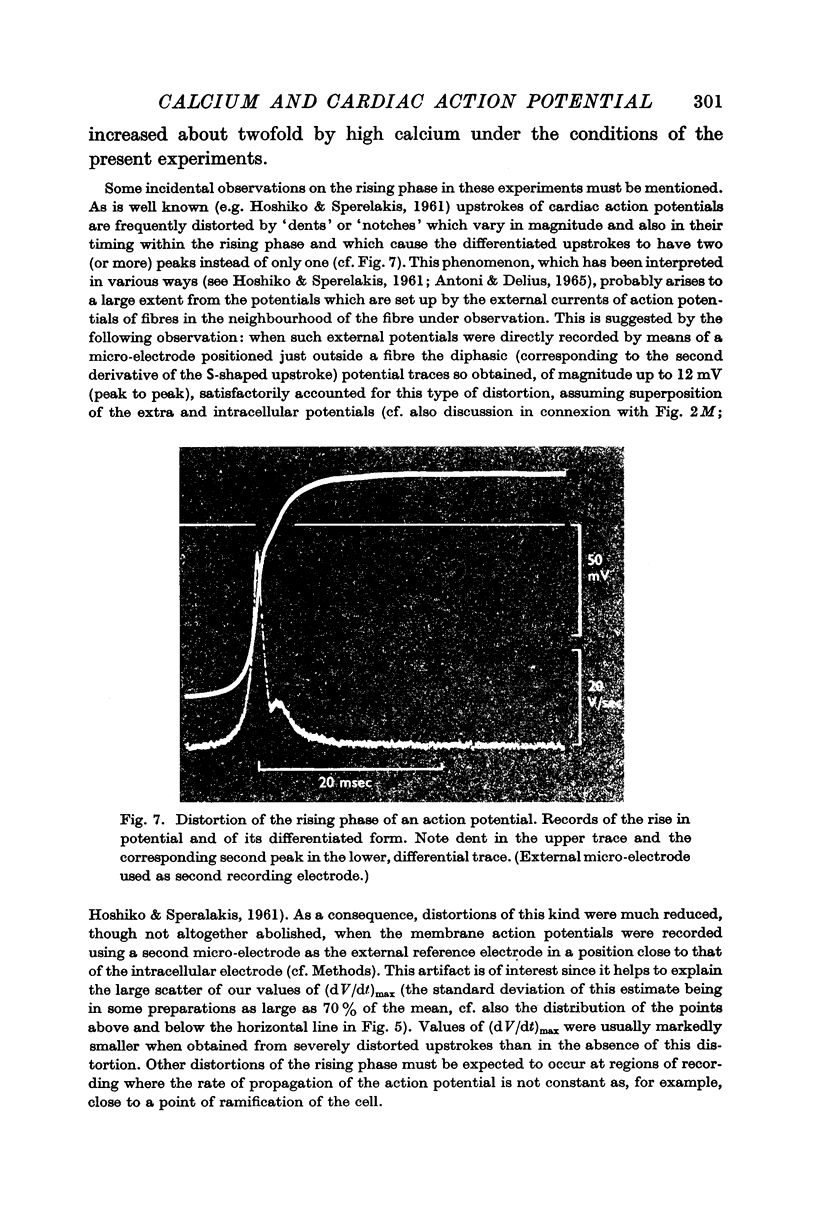
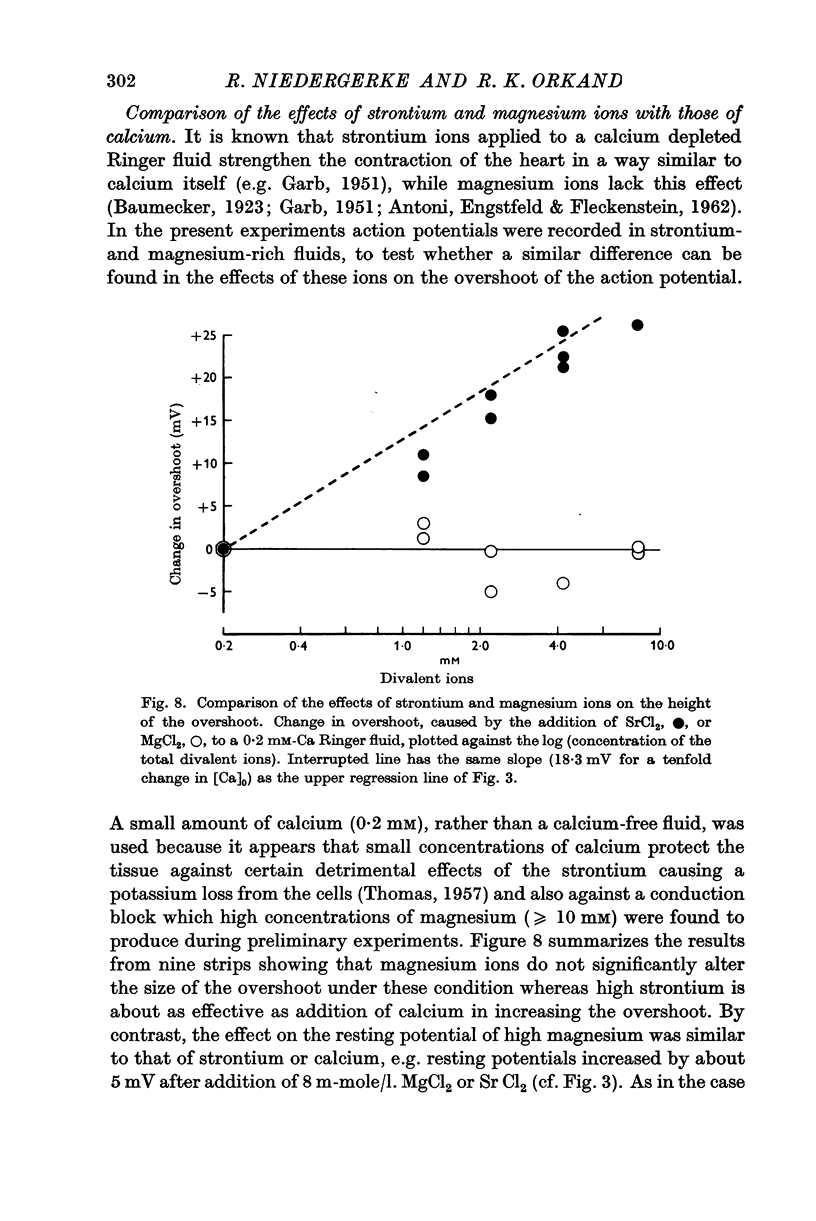
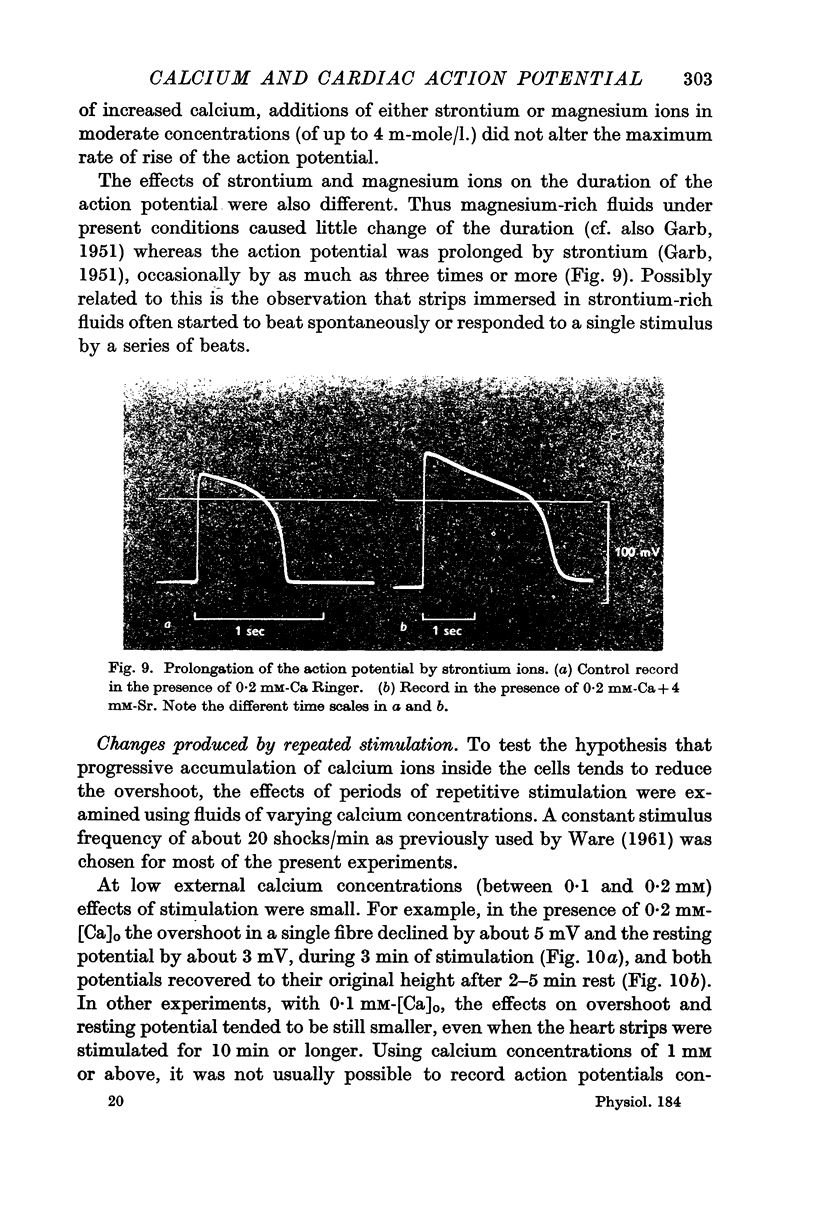
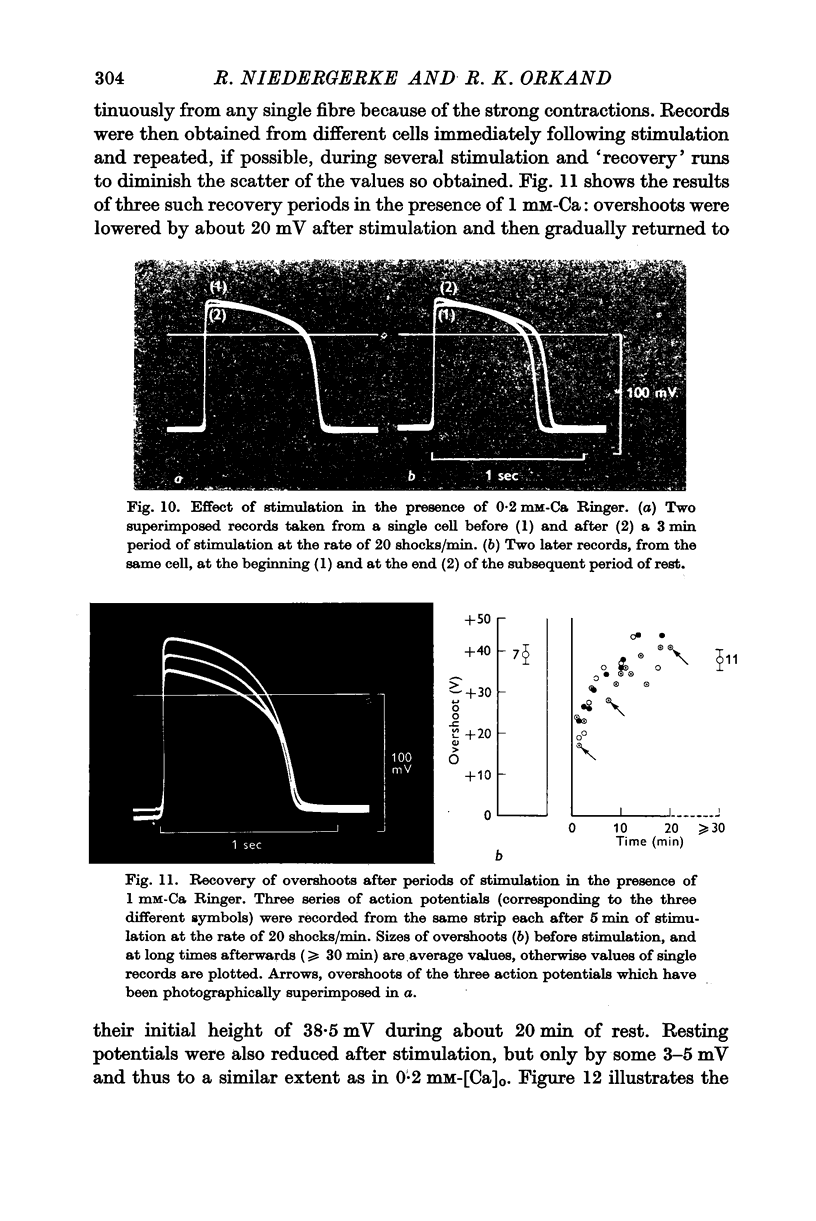
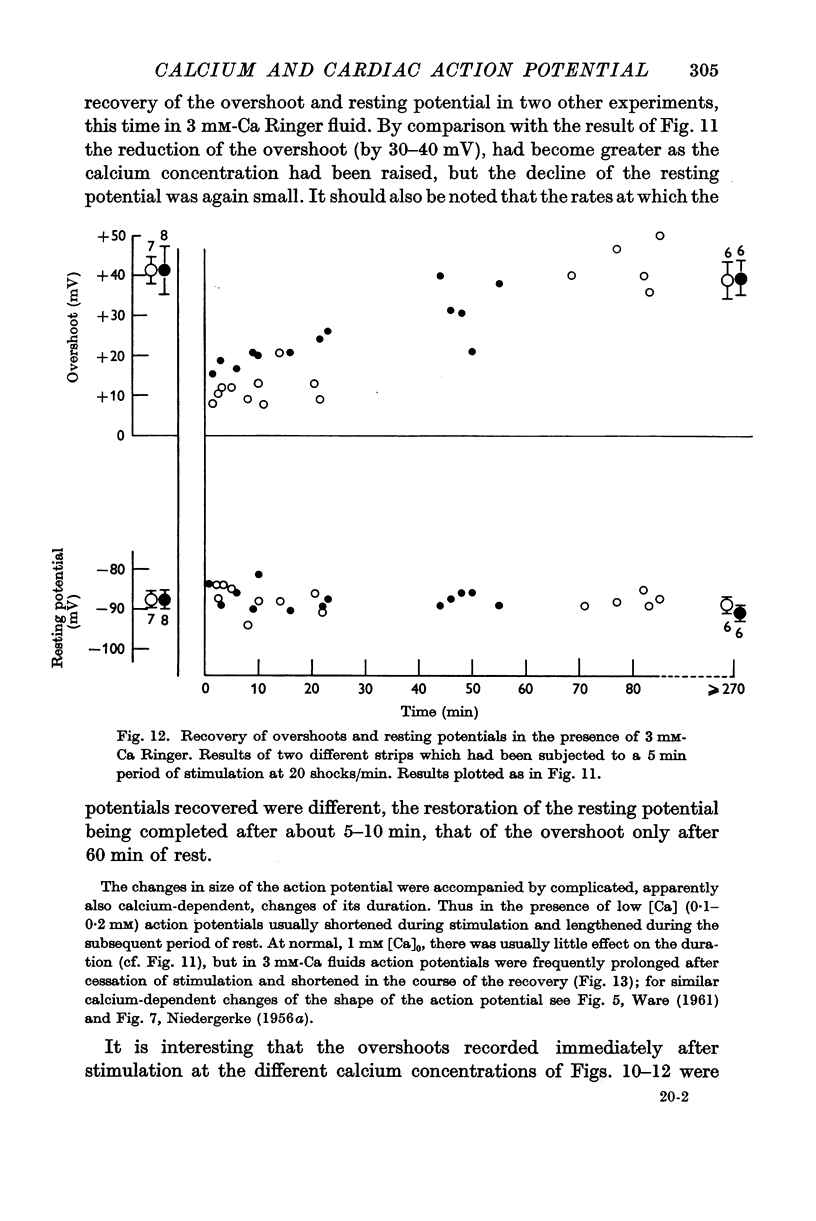
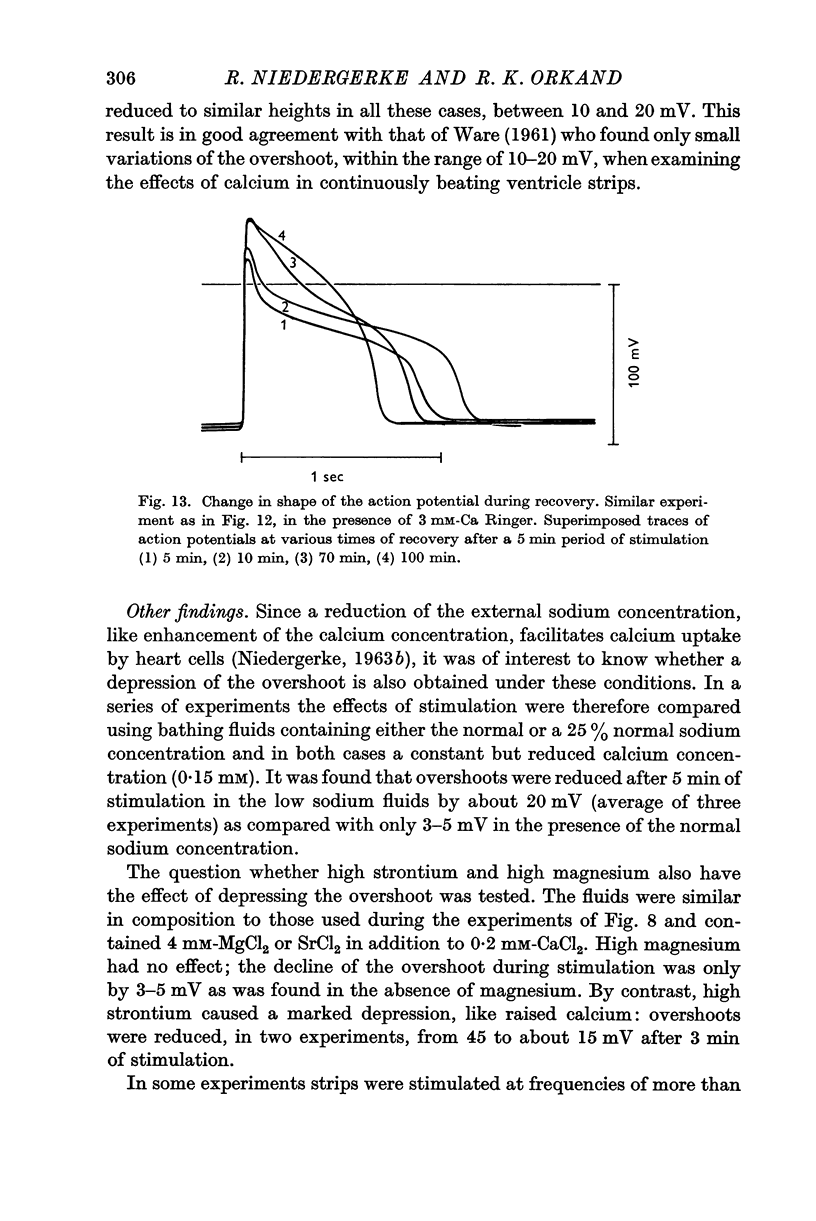
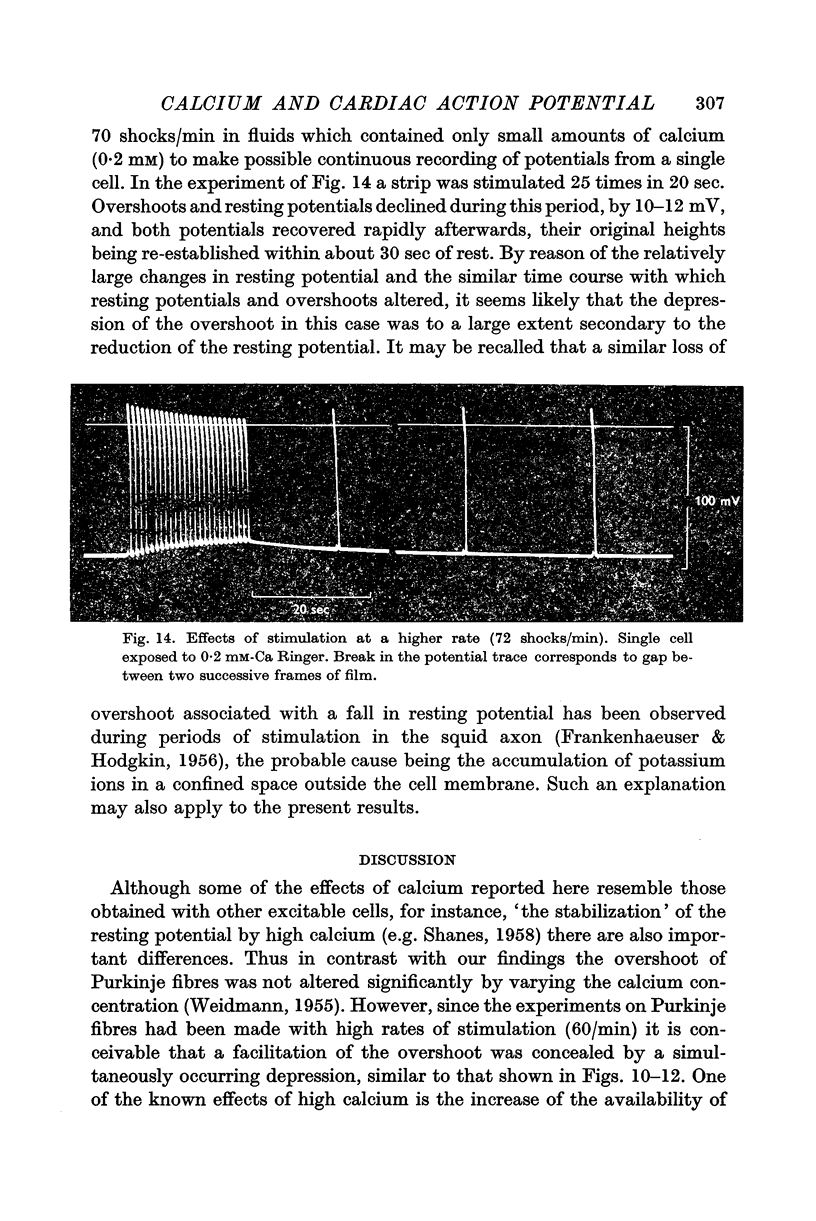
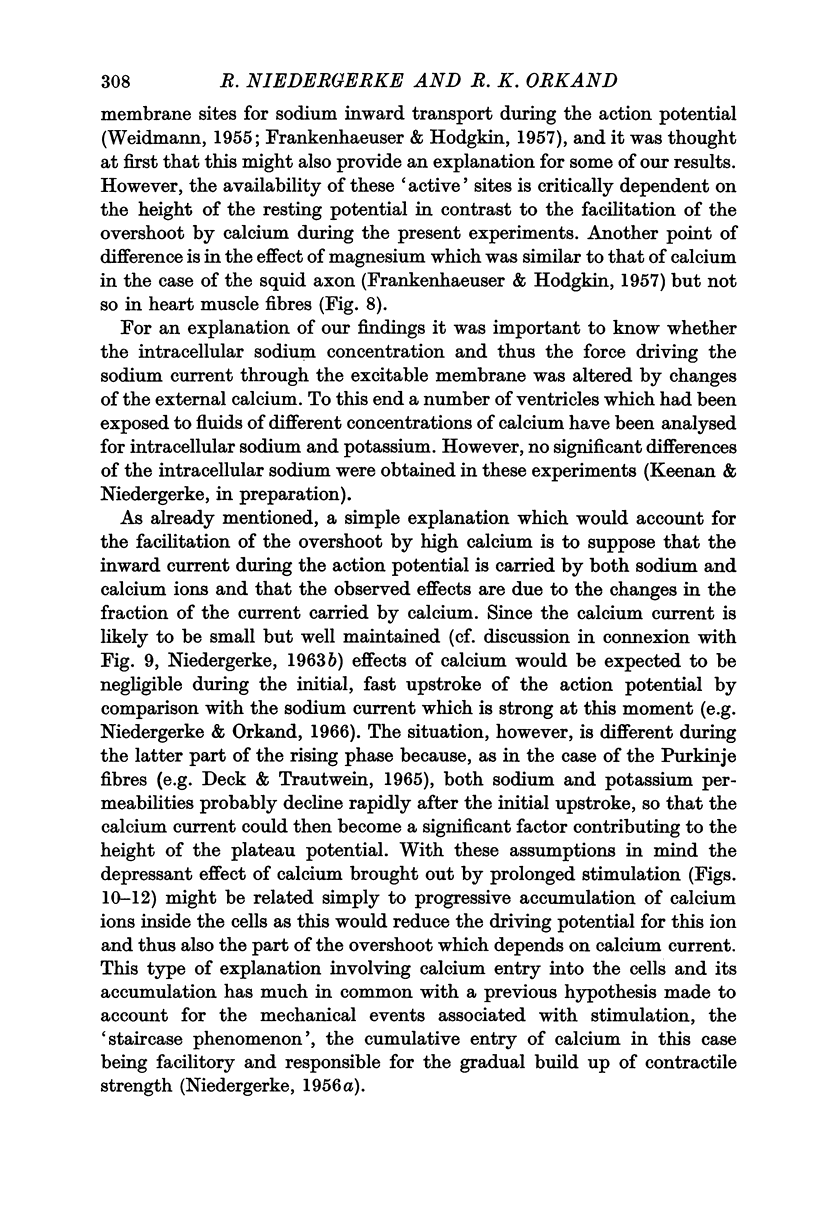
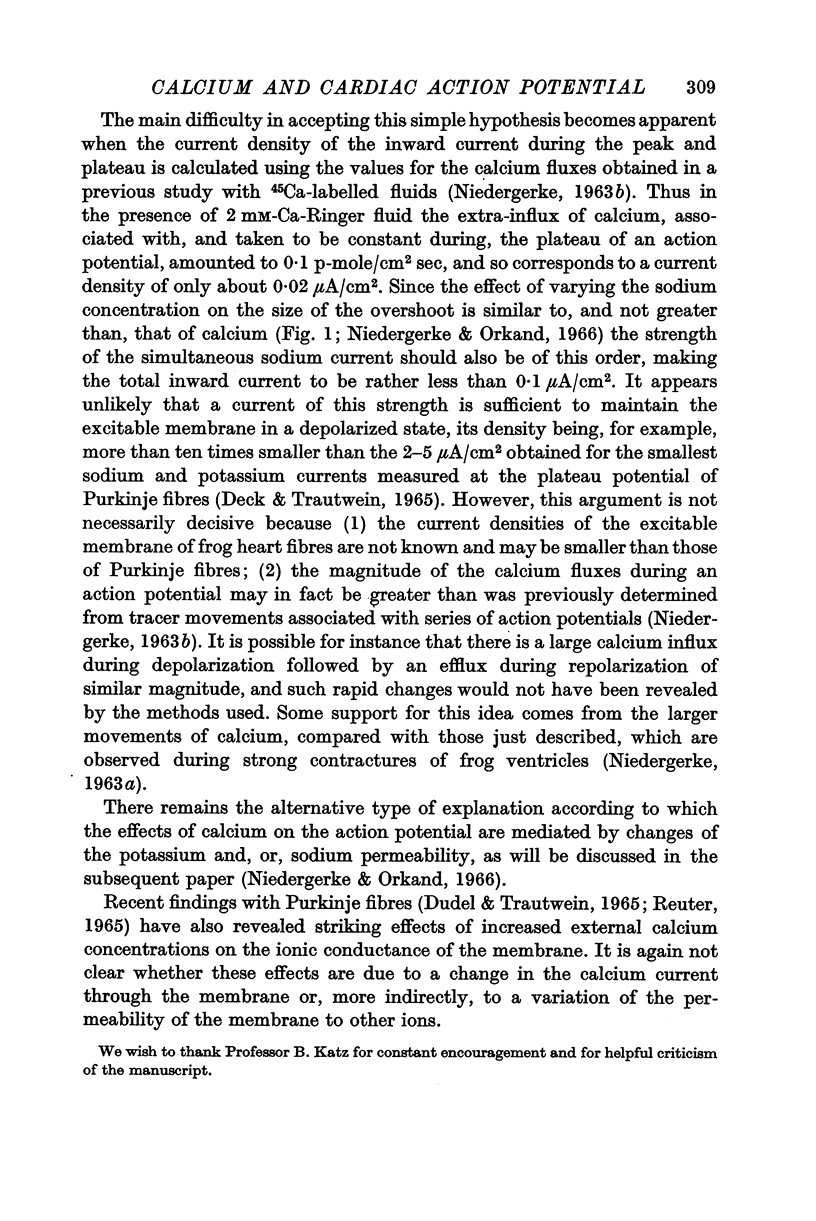
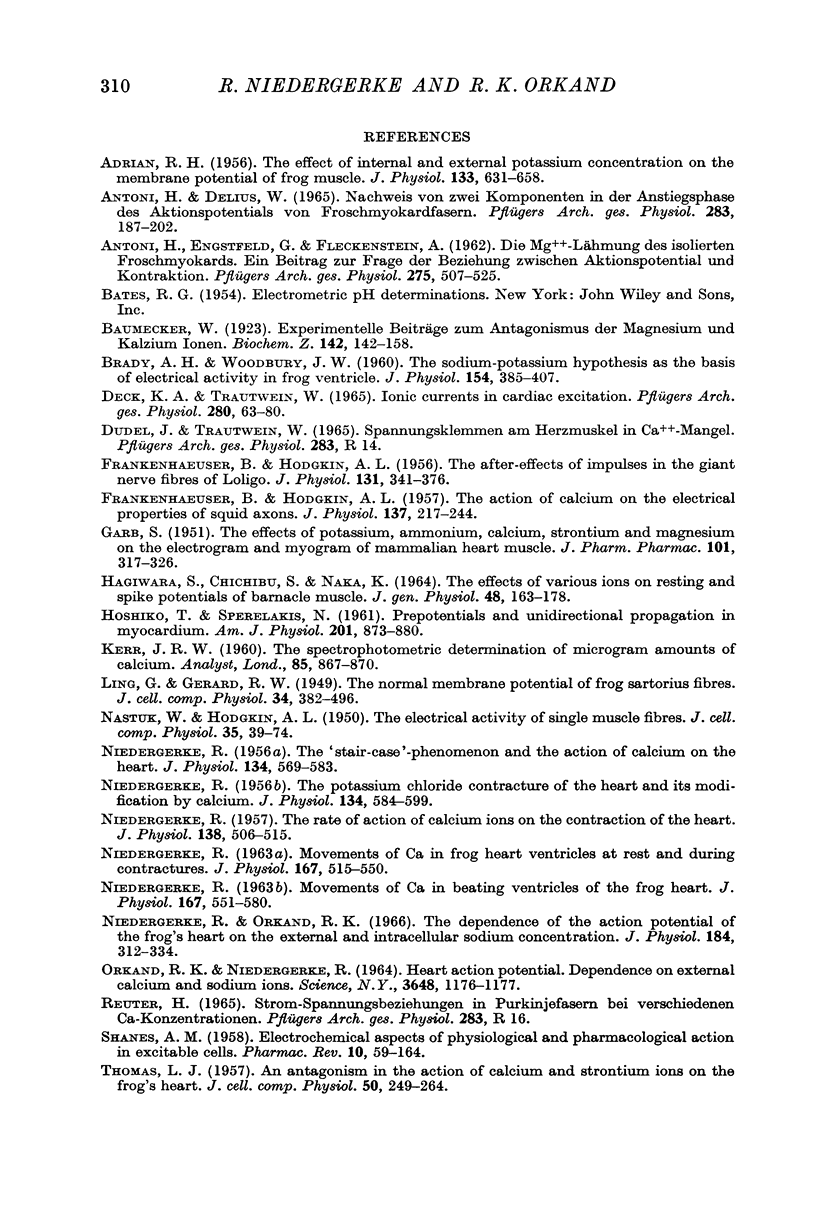
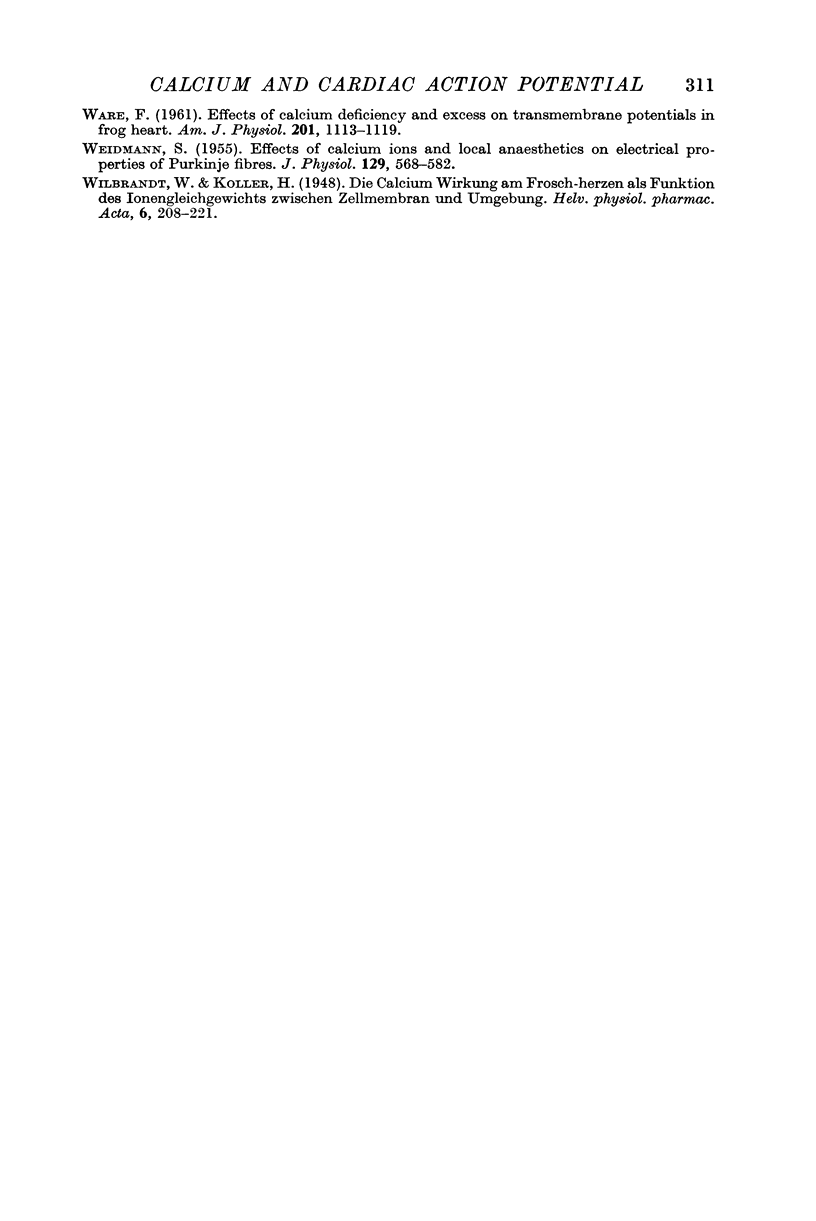
Selected References
These references are in PubMed. This may not be the complete list of references from this article.
- ADRIAN R. H. The effect of internal and external potassium concentration on the membrane potential of frog muscle. J Physiol. 1956 Sep 27;133(3):631–658. doi: 10.1113/jphysiol.1956.sp005615. [DOI] [PMC free article] [PubMed] [Google Scholar]
- ANTONI H., DELIUS W. NACHWEIS VON ZWEI KOMPONENTEN IN DER ANSTIEGSPHASE DES AKTIONSPONTENTIALS VON FROSCHMYOKARDFASERN. Pflugers Arch Gesamte Physiol Menschen Tiere. 1965 Apr 6;283:187–202. [PubMed] [Google Scholar]
- ANTONI H., ENGSTFELD G., FLECKENSTEIN A. [Magnesiumparalysis of the isolated frog myocardium. A contribution to the problem of the relation between the action potential and contraction]. Pflugers Arch Gesamte Physiol Menschen Tiere. 1962;275:507–525. [PubMed] [Google Scholar]
- Brady A. J., Woodbury J. W. The sodium-potassium hypothesis as the basis of electrical activity in frog ventricle. J Physiol. 1960 Dec;154(2):385–407. doi: 10.1113/jphysiol.1960.sp006586. [DOI] [PMC free article] [PubMed] [Google Scholar]
- DECK K. A., TRAUTWEIN W. IONIC CURRENTS IN CARDIAC EXCITATION. Pflugers Arch Gesamte Physiol Menschen Tiere. 1964 Jun 9;280:63–80. doi: 10.1007/BF00412616. [DOI] [PubMed] [Google Scholar]
- FRANKENHAEUSER B., HODGKIN A. L. The action of calcium on the electrical properties of squid axons. J Physiol. 1957 Jul 11;137(2):218–244. doi: 10.1113/jphysiol.1957.sp005808. [DOI] [PMC free article] [PubMed] [Google Scholar]
- FRANKENHAEUSER B., HODGKIN A. L. The after-effects of impulses in the giant nerve fibres of Loligo. J Physiol. 1956 Feb 28;131(2):341–376. doi: 10.1113/jphysiol.1956.sp005467. [DOI] [PMC free article] [PubMed] [Google Scholar]
- GARB S. The effects of potassium, ammonium, calcium, strontium and magnesium on the electrogram and myogram of mammalian heart muscle. J Pharmacol Exp Ther. 1951 Apr;101(4):317–326. [PubMed] [Google Scholar]
- HAGIWARA S., CHICHIBU S., NAKA K. I. THE EFFECTS OF VARIOUS IONS ON RESTING AND SPIKE POTENTIALS OF BARNACLE MUSCLE FIBERS. J Gen Physiol. 1964 Sep;48:163–179. doi: 10.1085/jgp.48.1.163. [DOI] [PMC free article] [PubMed] [Google Scholar]
- HOSHIKO T., SPERELAKIS N. Prepotentials and unidirectional propagation in myocardium. Am J Physiol. 1961 Nov;201:873–880. doi: 10.1152/ajplegacy.1961.201.5.873. [DOI] [PubMed] [Google Scholar]
- NIEDERGERKE R. MOVEMENTS OF CA IN FROG HEART VENTRICLES AT REST AND DURING CONTRACTURES. J Physiol. 1963 Jul;167:515–550. doi: 10.1113/jphysiol.1963.sp007166. [DOI] [PMC free article] [PubMed] [Google Scholar]
- NIEDERGERKE R. Movements of Ca in beating ventricles of the frog heart. J Physiol. 1963 Jul;167:551–580. doi: 10.1113/jphysiol.1963.sp007167. [DOI] [PMC free article] [PubMed] [Google Scholar]
- NIEDERGERKE R. The potassium chloride contracture of the heart and its modification by calcium. J Physiol. 1956 Dec 28;134(3):584–599. doi: 10.1113/jphysiol.1956.sp005667. [DOI] [PMC free article] [PubMed] [Google Scholar]
- NIEDERGERKE R. The rate of action of calcium ions on the contraction of the heart. J Physiol. 1957 Oct 30;138(3):506–515. doi: 10.1113/jphysiol.1957.sp005867. [DOI] [PMC free article] [PubMed] [Google Scholar]
- NIEDERGERKE R. The staircase phenomenon and the action of calcium on the heart. J Physiol. 1956 Dec 28;134(3):569–583. doi: 10.1113/jphysiol.1956.sp005666. [DOI] [PMC free article] [PubMed] [Google Scholar]
- Niedergerke R., Orkand R. K. The dependence of the action potential of the frog's heart on the external and intracellular sodium concentration. J Physiol. 1966 May;184(2):312–334. doi: 10.1113/jphysiol.1966.sp007917. [DOI] [PMC free article] [PubMed] [Google Scholar]
- ORKAND R. K., NIEDERGERKE R. HEART ACTION POTENTIAL: DEPENDENCE ON EXTERNAL CALCIUM AND SODIUM IONS. Science. 1964 Nov 27;146(3648):1176–1177. doi: 10.1126/science.146.3648.1176. [DOI] [PubMed] [Google Scholar]
- SHANES A. M. Electrochemical aspects of physiological and pharmacological action in excitable cells. I. The resting cell and its alteration by extrinsic factors. Pharmacol Rev. 1958 Mar;10(1):59–164. [PubMed] [Google Scholar]
- THOMAS L. J., Jr An antagonism in the action of calcium and strontium ions on the frog's heart. J Cell Physiol. 1957 Oct;50(2):249–264. doi: 10.1002/jcp.1030500208. [DOI] [PubMed] [Google Scholar]
- WARE F. Effects of calcium deficiency and excess on transmembrane potentials in frog heart. Am J Physiol. 1961 Dec;201:1113–1119. doi: 10.1152/ajplegacy.1961.201.6.1113. [DOI] [PubMed] [Google Scholar]
- WEIDMANN S. Effects of calcium ions and local anesthetics on electrical properties of Purkinje fibres. J Physiol. 1955 Sep 28;129(3):568–582. doi: 10.1113/jphysiol.1955.sp005379. [DOI] [PMC free article] [PubMed] [Google Scholar]


